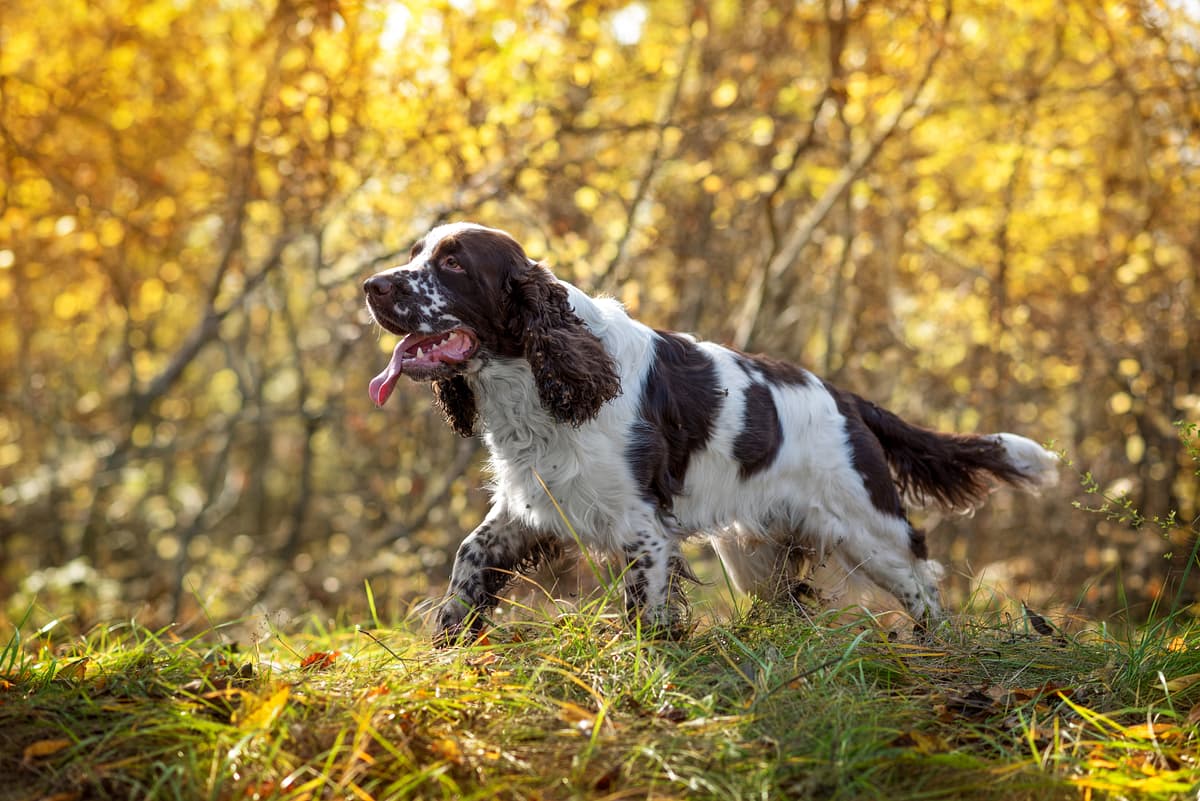English Springer Spaniel vs English Bulldog
Discover the differences between English Springer Spaniel and English Bulldog to make the best choice for your situation.
Try different breeds

English Springer Spaniel
Energetic, affectionate, and eager to please, this breed thrives on companionship and activity. Renowned for intelligence and versatility, it makes a loving family dog and skilled sporting partner.

English Bulldog
Stocky, courageous, and affectionate, this breed charms with its wrinkled face and calm nature. Loyal and gentle, it thrives as a loving family companion.
Quick comparison
Medium
20–25 kg
Medium length, feathered
12–14 years
18–23 kg
High energy
Medium
23–25 kg
Short, smooth
8–10 years
18–23 kg
Low activity needs
Personality & behavior
Compare the personality traits and behavioral characteristics of both breeds.
English Springer Spaniel
Very sociable with people and other dogs
Quick learner, responds well to training
Highly active, needs regular physical activity
Enjoys games and interactive playtime
Adjusts well to various living situations
English Bulldog
Affectionate and gentle with family and children
Learns basic commands with some patience
Prefers lounging over vigorous physical activity
Enjoys play but tires fairly quickly
Adjusts well to most living environments
Care needs
Exercise, grooming, and daily care requirements
English Springer Spaniel
Hip dysplasia, ear infections
English Bulldog
Brachycephalic syndrome, skin fold infections
Suitability
How well each breed fits different living situations and families
English Springer Spaniel
Good option
Intelligent and eager to please, but needs consistent training and exercise
Not ideal
Needs space and regular activity, may become restless in small apartments
Perfect fit
Energetic breed thrives with active owners who can provide daily exercise
Very friendly
Gentle and playful, generally patient with children and enjoys family life
Highly suitable
Social and adaptable, usually gets along well with other pets when socialized early
Prone to anxiety
Dislikes being left alone and may develop separation issues if unattended for long
English Bulldog
Good option
Easygoing, low-maintenance nature suits owners with limited dog experience
Excellent fit
Moderate exercise needs and calm demeanor work well in small living spaces
Not ideal
Low stamina and breathing issues make them unsuited for high-activity lifestyles
Very suitable
Gentle, patient, and tolerant with young children when properly socialized
Usually compatible
Generally sociable but may need guidance with other pets, especially dogs
Not recommended
They struggle with long periods alone and are prone to separation anxiety
Breed strengths
What each breed excels at and their best qualities
English Springer Spaniel
- Eager to please and trainable
- Excellent with children and families
- Strong scenting and hunting abilities
- High endurance for outdoor activities
- Friendly and sociable with people
English Bulldog
- Affectionate with family members
- Generally good with children
- Low exercise requirements
- Minimal grooming needs
- Adaptable to apartment living
Challenges & considerations
Potential challenges and considerations for each breed
English Springer Spaniel
- Prone to separation anxiety when left alone
- Regular grooming needed for feathered coat
- Can be overly excitable without enough exercise
- May develop ear infections due to floppy ears
- Tendency to chase small animals or birds
English Bulldog
- Prone to respiratory problems
- High risk of overheating
- Susceptible to skin infections
- Can be stubborn during training
- Tends to drool frequently
Ready to choose your perfect breed?
Learn more about each breed or compare other breeds to find the perfect match for your lifestyle.
Discover more helpful tools
Make use of our other free tools to get the most out of your pet experience
